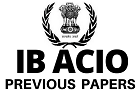sponsored links
- HTTP (Hyper Text Transfer Protocol) which defines the rules for exchanging the hypertext documents from a server to a browser.
- URL (Uniform Resource Locator) which describes a scheme to localize the documents on the net
- HTML (Hyper Text Markup Language) which is the base language to define hypertext documents.
 In the year 1994, the World Wide Web Consortum (W3C) was founded to develop common protocols to help guide the evolution of the World Wide Web. The W3C is an international industry consortium, jointly hosted by the Massachusetts Institute of Technology Laboratory for computer Science (MIT / LCS) in the United States; the Institute National de Researche en Informatique et en Automatique (INRIA) in Europe; and the Keio University Shonan Fujusaa Campus in Asia.
In the year 1994, the World Wide Web Consortum (W3C) was founded to develop common protocols to help guide the evolution of the World Wide Web. The W3C is an international industry consortium, jointly hosted by the Massachusetts Institute of Technology Laboratory for computer Science (MIT / LCS) in the United States; the Institute National de Researche en Informatique et en Automatique (INRIA) in Europe; and the Keio University Shonan Fujusaa Campus in Asia.
World Wide Web provides to users on computer networks with a consistent means to access a variety of media in a simplified fashion. The World Wide Web consists of a vast number of computers linked world wide via modems (Modem is a device that connects computer to the telephone system and performs the necessary translation of the signals). The amount of the information available through a computer connected to the Web with a phone line is practically endless. Although information on the Internet is displayed with the conventional use of Hypertext, the World Wide Web utilizes various styles of graphic, sound and occasional video to aesthetically enhance the display of information. This can be achieved by virtually any computer that has a modem with the appropriate software and a dial-up connection with a provider of a gateway to the Internet. The only limitation being the graphics capabilities of the user's computer hardware. Despite this limitation, a user may still take advantage of the Web's networking of information by receiving the information in a text only capacity and therefore maintaining some backward compatibility for users of earlier systems. The Web offers interaction between the presenters and the recipients of a Hypertext presentation by allowing the user of E-mail, the transfer of fill out form information and requests from either end, faster and more economical than a fax machine or phone call.
A normal WWW page is called a hypertext and contains normal black text, blue underlined text, pictures and buttons. The icons and the blue text are links leading to other files which can be held in any computer connected to Internet. The size of documents is no longer limited by the storage capacity of a local computer. Distribution is no longer limited to those users you can send your file to, but to those who point to your file. Every computer on Internet can distribute information to other computers. Some documents consist almost entirely of pointers to other documents.
When we access a particular internet site in the web, the first web page that appears is called home page. The term home page commonly refers to the index page of any organization or information source. From the home page, you can have links that take you to further levels of information within the related topic, or there can also be links to other home pages.
In order to see a specific file, one simply has to move (on the monitor) the arrow icon of the mouse on top of the button or of the blue underlined word and click the mouse button. This "chasing" of links is called "Surfing the net", "net surfing" or "web surfing". Since all the information is just a mouse-click away, one can perform searches much faster than would be possible in a library. Moreover one has access to some of the largest libraries and museums in the world.
Important Point to Note : Tim Berners-Lee is credited as the inventor of the World Wide Web.
sponsored links
Important Point to Note : Tim Berners-Lee is credited as the inventor of the World Wide Web.
Difference between Internet and World Wide Web (WWW)
Many people use the terms Internet and World Wide Web (aka. the Web) interchangeably, but in fact the two terms are not synonymous. The Internet and the Web are two separate but related things. The Internet, linking your computer to other computers around the world, is a way of transporting content. As we've already discussed above, the Web is software that lets you use that content…or contribute your own. The Web, running on the mostly invisible Internet, is what you see and click on in your computer’s browser.
That's all for now friends. In our next post we shall discuss about Search Engines and Internet Service Providers. Happy Reading :)
sponsored links










 English Vocabulary from
English Vocabulary from











thanks mam
ReplyDeletethanks 4 such a helpful post... i wasnt knowng the diff b/w web and internet
ReplyDeleteso the ans of ution asked in sbi clerk which of following connects different networks is internet.web was also the option.
ReplyDeleteAny one Pls tell Me.. how to solve possibility type of syllogism? my xam on 26 july.
ReplyDeleteThey've asked this question in SBI clerks
ReplyDeleteThank you team. You are always been very helpful to us.
Thankyou
ReplyDelete1. Statement: I. All jugs are glasses.
ReplyDeleteII. All glasses are cups.
III. All jugs are pens.
Conclusions I. All pens are jugs.
II. Some glasses are pens.
III. Some cups are pens.
IV. All pens are cups.
2. Statement: I. Some birds are insects.
II. All birds are butterflies.
III. All insects are snakes.
Conclusions I. Some snakes are birds.
II. Some butterflies are insects.
III. Some snakes are butterflies.
IV. Some insects are birds. pls give answer
Thank u team
ReplyDeleteWho is the president of BCCI and President of Indian Cricket Board for IPL affairs?
ReplyDeletein the review they told there were questions regarding puzzels, wat are those?? Are those problem figures?? plss let me know
ReplyDelete